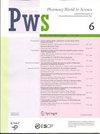THE IMPACT OF DIESEL BUS EMISSIONS ON AIR POLLUTION IN ULAANBAATAR AND ATTEMPT TO REDUCE IT
引用次数: 0
Abstract
The advantages of diesel engines have led it to become the only solution for heavy-duty vehicles (HDV), including city buses. Exhaust gas from diesel engines (EG) is a common environmental pollutant and carcinogenic to human health. The paper presents the results of measuring the emissions of city buses running on high sulfur fuel with and without diesel particulate filter (DPF). The study was conducted in real traffic conditions along the regular route of the city of Ulaanbaatar. The measurements were carried out using the HORIBA PEMS (Portable Emissions Measurement System) and the gravimetric method. The measured data was used to determine the actual emission levels from city buses. The actual particulate matter (PM) emissions from city buses were determined during the warm and cold seasons on a daily basis. It is found that a bus with average daily mileage of 242 km emits average of 166.155 g of PM into the atmosphere per day. This fluctuates depending on the season - 141.3 g in summer and 175.8 g in winter. The actual PM emissions of a city bus is 0.6866 g/km. The NOx concentration in the exhaust gases is 1410.94 ppm on average. As a result of 6 months of measurements, a total of 346.651 kg of soot was collected from 24 buses. Innovation: Actual on-road emissions from Ulaanbaatar buses and a cassette-type DPF system with “active” outside the bus regeneration, that can reduce conventional diesel engine PM emissions by up to 90% regardless of the sulfur content of the fuels.柴油公交车排放对乌兰巴托空气污染的影响,并试图减少它
柴油发动机的优点使其成为重型车辆(HDV)的唯一解决方案,包括城市公交车。柴油机废气是一种常见的环境污染物,对人体健康具有致癌性。本文介绍了使用高硫燃料的城市公交车在使用和不使用柴油微粒过滤器(DPF)时的排放测量结果。这项研究是在乌兰巴托市常规路线的真实交通条件下进行的。测量使用HORIBA PEMS(便携式排放测量系统)和重量法进行。测量数据被用来确定城市公交车的实际排放水平。城市公交车的实际颗粒物(PM)排放量分别在暖季和寒季进行测定。研究发现,一辆平均日行驶里程为242公里的公共汽车每天向大气中排放的PM平均为166.155 g。这一数字因季节而异,夏季为141.3克,冬季为175.8克。城市公交车的实际PM排放量为0.6866 g/km。废气中NOx浓度平均为1410.94 ppm。经过6个月的测量,共从24辆公交车上收集了346.651公斤的煤烟。创新:乌兰巴托公共汽车的实际道路排放,以及具有“主动”公共汽车外部再生的盒式DPF系统,无论燃料的硫含量如何,都可以将传统柴油发动机的PM排放减少高达90%。
本文章由计算机程序翻译,如有差异,请以英文原文为准。
求助全文
约1分钟内获得全文
求助全文

 求助内容:
求助内容: 应助结果提醒方式:
应助结果提醒方式:


